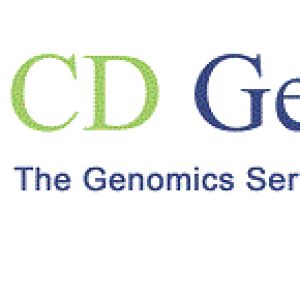The Emergence of a New Force: Circular RNAPosted by kiko on October 10th, 2022 Circular RNAs are closed-loop single-stranded RNA (ssRNA) that are structurally specific, and produced by the back-splicing process. CircRNAs can exist independently of proteins and are unaffected by exonucleases, and are widely found in plant and animal cells to regulate gene expression. Circular RNAs were first discovered by Sanger studying virus-like RNAs. And in 1991, Nigro stumbled upon an unusual novel RNA product. The low abundance of circRNA expression and the limitations of detection technology made circRNA initially overlooked as an abnormal product of RNA splicing.
Mechanism of Circular RNAs It has been found that circRNAs can be cis-regulated by competing for splicing with their linear RNA counterparts. Recent reports suggest it also has cross-regulatory functions. Some circRNAs can interact with microRNAs, regulate translation processes and participate in the terms of immune responses. Some circular RNAs can interact with RBPs and act as "protein sponges". Numerous cellular studies have shown that cyclic RNAs regulate gene expression by regulating transcription, splicing, stability, and translation. However, the biogenesis and characterization of circRNAs still need further research. Advances In CircRNA Research CircRNAs are currently relatively well studied in the field of tumor research. Studies have shown that circRNAs play critical roles in many aspects of multiple malignancies, such as cell cycle and proliferation, apoptosis, vascularization and invasion. Currently, it has been found that circRNAs can act as tumor antigens in immune cells, with vaccine adjuvants, or with other molecules (e.g., miRNAs or proteins) for tumor immunotherapy. However, the complex tumor regulatory network makes circRNA research still in its infancy, and the regulation mode of circRNA may be related to tumor type and tumor microenvironment type, and the algorithm and technology for detecting circRNA are not yet developed enough are also obstacles to the research process. Circular RNA Sequencing Technology Beginning around 2010, the development of RNA-seq technology and the development of specialized computational pipelines ignited circRNA research. The challenges in the detection and quantification of circular RNA arise from its circular nature and extensive sequence overlap with homologous linear transcripts, thus circular RNA analysis methods require unique sequences targeting reverse splice sites. Therefore, primers need to be designed separately when using PCR methods and the reverse splicing needs to be specifically addressed during amplification. Detection and quantification of circular RNA can be performed using long read or next-generation sequencing. Next-generation sequencing has emerged as a transcriptome-wide method for characterizing circRNAs. Combining multiple computational methods that can be used to dissect changes in circRNA expression between samples is a routine analysis for assessing the significance of differentially expressed circRNAs in circRNA research. Long-read sequencing provides direct access to full-length RNA, obtaining information on splicing when multiple exons and introns are included. Based on the role of circRNAs in complex disease mechanisms, more and more scientists are focusing on circRNAs. Single-cell expression patterns of circRNAs in different tissues, developmental stages, and cellular states have been investigated, and a large number of single-cell RNA transcriptome sequencing results have been summarized to provide the possibility to reveal the dynamic changes of circRNAs in different cell types or developmental stages. As other roles of circRNAs continue to be revealed, applications based on circRNAs will be developed to benefit biomedical research and disease diagnosis, as well as therapeutic applications as RNA aptamers, gene expression platforms, clinical targets and biomarkers. Like it? Share it!More by this author |


